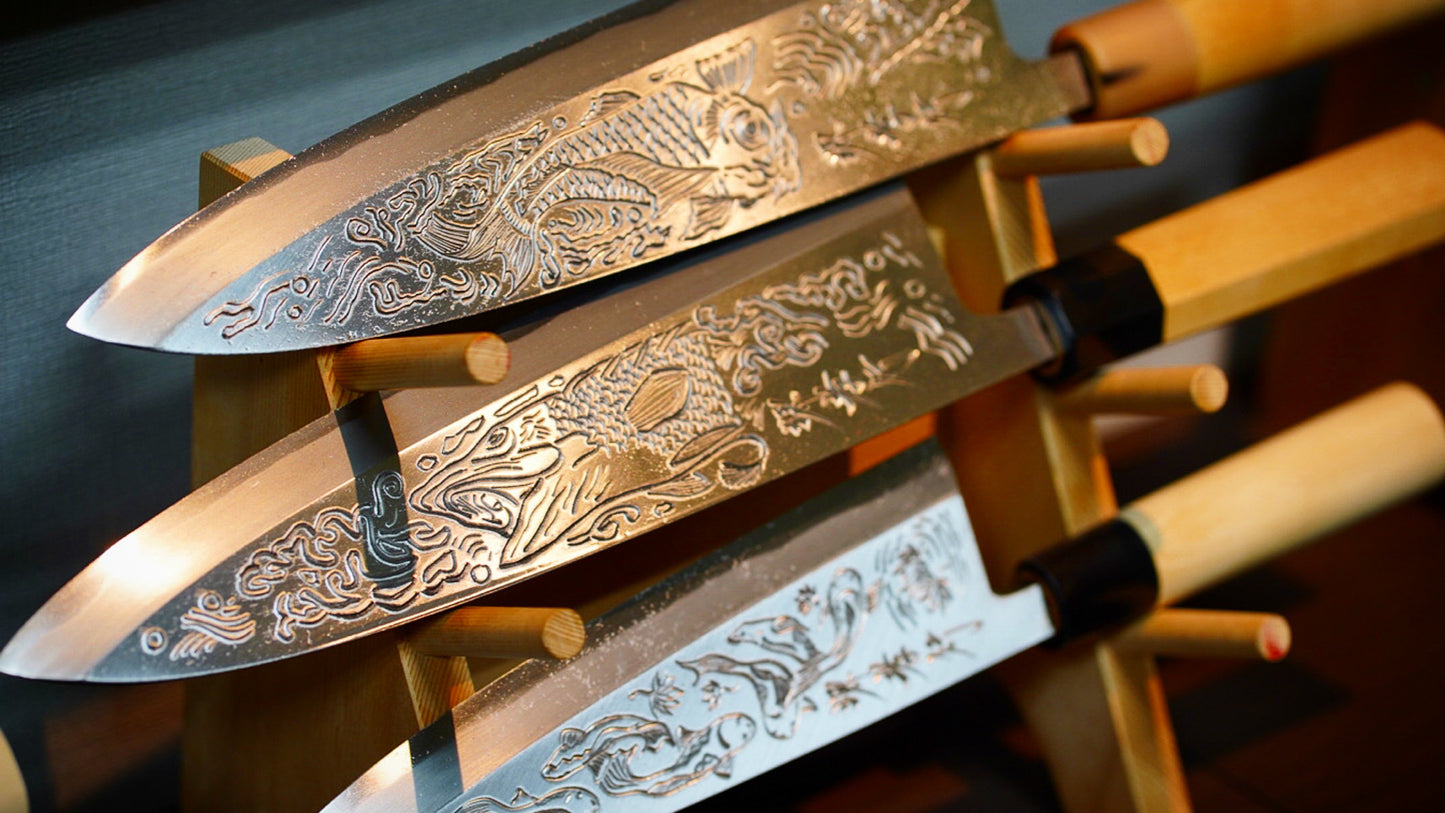
Japanese knives are traditional blades that are deeply rooted in Japanese culinary culture, and their history can be traced back to the Japanese sword. There are many different types of Japanese knives depending on their purpose, and they are masterpieces that provide the perfect sharpness for cooking. In this article, we will explain the history and representative types of Japanese knives, as well as what each type is used for.
The history of Japanese knives: Traditional techniques that began with swordsmiths

The roots of Japanese knives lie in the ancient Japanese swordsmithing techniques. Swordsmithing techniques used by samurai in particular were also applied to knife making, and developed in areas such as Sakai and Kyoto. Sakai knives established their reputation during the Edo period, highly valued for their sharpness and durability needed for filleting fish. This traditional technique has been passed down to Japanese knives today.
Japanese knives are characterized by their sharp cutting edge and single-edged structure. This single-edged design is ideal for precision cutting of fish and vegetables, and is particularly effective when the chef must demonstrate fine technique. Traditional knives are hand-forged by artisans one by one, and are packed with skilled techniques.
Types and uses of Japanese knives
There are many types of Japanese knives, each specialized for a specific purpose. Below we will introduce some of the most common types of knives and their uses.
1. Deba knife

The Deba knife is a specialized knife for filleting fish. Its thick blade and weight make it possible to cut fish including the bones, making it an essential knife for fish dishes. It is particularly effective when filleting fish and cutting small bones.
2. Yanagiba knife

The yanagiba knife is used to cut sashimi. It features a long, thin blade that can slice through fish in one smooth stroke. The blade is extremely sharp and is essential for beautifully finishing sashimi and sushi. It is a particularly popular knife in the Kansai region, and by cutting through fish in one motion, it causes no unnecessary damage to the ingredients.
3. Usuba Knife

Usuba knives are primarily used to cut vegetables. With a thin blade and delicate sharpness, they are ideal for cutting vegetables beautifully. They are particularly effective for dishes where shape is important, such as Kyoto vegetables. They are useful for slicing vegetables and making decorative cuts.
The appeal of Japanese knives and modern cooking

Japanese knives are loved by chefs both in Japan and overseas for their beautiful appearance and sharp cutting edge. In addition, using Japanese knives allows you to realize the delicate techniques unique to Japanese cuisine, which greatly improves the quality of your cooking. Japanese knives have elevated cooking to the level of art, and play an important role in supporting cooking alongside the skills of the craftsman.
summary
Japanese knives are not just cooking tools, but important items for improving the quality of cooking. By understanding their types and history, you will be able to approach cooking with a deeper knowledge. If you are thinking of getting a Japanese knife, choose the one that best suits your purpose and experience the charm of Japanese knives to the fullest.












